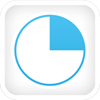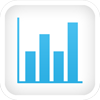Data and Display Types
|
Dovico's built-in reports are based on 6 data types and 5 display types. Data types generally define what type of data is included in the report (time, expenses, costs, etc.) while the display types determine how the data is displayed (in a table, pie chart, grid, etc.). Each report is built on one selection from each of these categories (data and display). When creating a new report, these must be chosen first.
This topic details both the data and display types available. The ability to import/export report data types is described in another topic (Managing Report Types).
|
REPORTING Basics Public, private and favorite reports Editing - making small changes to an existing report Sneak peak at all the default reports Operational Questions Creating a report from scratch |
Data Types
-
Time and Costs: This report type is primarily used to display the calculated costs generated by time entries. This report type limits data to the hours entered against projects and tasks that have been submitted and approved. Time entered but not submitted, or time waiting to be approved is not included in Time and Cost reports. Depending on how the data is displayed (standard, chart), you can show individual time entries with all their details, or choose to roll-up time entries. You can display their associated costs, pay or billing rates and other data used in calculating costs. From these reports, you may group or sort the data by most items in the data hierarchy (client > project > task > employee, etc.).
-
Budget and Actuals: This report type is similar to the Time and Costs type described above but includes budget information as well. This report type is primarily used to compare project budgeted time or budgeted costs against the actual data from approved time entries. Data grouping and sorting functionality is similar to the Time and Costs data type described above.
-
Time: The Time type reports provide summary or detailed information on time entries against projects and tasks. It is different from Time and Costs types in 2 significant ways: (1) No costs are displayed and (2) you can report on time regardless of its status (approved, unapproved, unsubmitted, etc.). Data may be grouped or sorted by employee, task, project, client etc.
-
Expenses: Reports built using the Expenses type provide information on expenses for projects. You can report on expenses whether they are approved or not.
-
Time and Expense: The Time and Expense report type is used to display costs data for both time and expenses. Only approved time or expenses are included in the data.
-
Lists: The List type reports provide detailed properties of various items entered into the database (Client, Employee, etc.).
|
Note: A few built-in reports use a Data type not available to any other user. For example, the Employee Time Summary report is built using one of these special data types. |
Display Types
-
Standard: These are 'typical' reports where data is shown in columns with the ability to group and sort the data. Most reports are built using the Standard display type.
-
Pie: Used to show the relative size of individual items that make up a sum or total. Dovico pie charts display up to 10 slices.
-
Bar: Used to compare data as values shown in the vertical axis with the data labels organized along the horizontal axis.
-
Grid: Used to group data in an easy-to-read grid format similar to a spreadsheet with totals displayed at the end of each column and row. Included is the ability to group the data (by project, group, etc.).
-
Raw Data: Used to display raw data in columns. Typically used to send data to Excel or another application.
Some display types are not available for certain report data types. For example, the Pie Chart is not available for List or Raw Data type reports.




